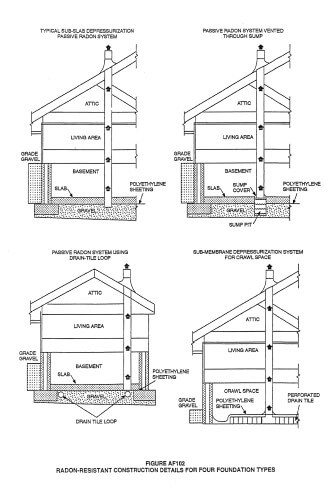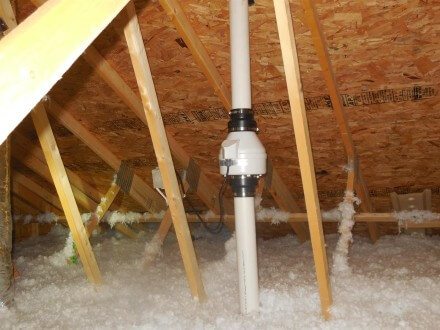Starting in 2009, the Minnesota State Building Code adopted Appendix F of the International Residential Code. Since then, all new homes built to the standards of the Minnesota State Building Code have been built with at least a passive radon mitigation system, or in some cases, an active system. This was done to help deal with high levels of radon in Minnesota; approximately 40% of homes in Minnesota have elevated levels of radon gas.
There are four sections to the radon requirements for Minnesota that are publicly available online: 1322.2100 – Incorporation by reference, 1322.2101 – Scope, 1322.2102 – Definitions, and 1322.2103 – Requirements. The last part is where most of the information is, and specifies exactly how a passive radon mitigation system is to be installed.
Post update 4/17/2015: The code sections changed on 2/17/15. The following paragraph contains the correct links:
There are four sections to the radon requirements for Minnesota that are publicly available online: 1303.2400 – Purpose and Scope, 1303.2401 – Definitions, 1303.2402 – Requirements for Passive Radon Control Systems, and 1303.2403 – Requirements for active radon control systems.
A passive radon mitigation system has a 4″ layer of rocks or sand underneath the basement slab and a soil gas retarder such as 6-mil poly laid on top of that, which is designed to prevent soil gases from coming into the home through cracks in the concrete.
Openings in the basement floor also need to be sealed, such as those around basement showers, the space between basement slabs and walls, and sump basket lids need to be made airtight as well.
To vent radon gases to the exterior of the home, a 3″ ABS or PVC pipe runs underneath the basement slab, where it can either connect to the drain tile system or to a “T” fitting that connects to a perforated section of piping running 10′ in both directions. From there, the pipe runs up through the middle of the home and terminates 12″ above the surface of the roof, and is indistinguishable from a plumbing vent. To help prevent someone from accidentally connecting a plumbing drain or vent to the radon vent, the radon vent needs to be labeled “Radon Reduction System”.
The diagrams below, available at the “Incorporation by reference” page mentioned above, show a few examples of this system.
Effectiveness of Passive Radon Reduction Systems
Passive radon reduction systems have been installed in new Minnesota homes for the last four years and they’re doing good. While approximately 40% of homes in Minnesota have high radon levels (over 4.0 pCi/L), a recent study by the Minnesota Department of Health showed that only 21% of new homes with passive radon reduction systems had high radon levels.
If an elevated radon level is found at a new construction home, the fix is typically easy and inexpensive. A radon fan can be installed at the radon vent in the attic, along with a simple monitor in the basement to show that the system is working. This fan will suck soil gases out from underneath the house, and is extremely effective at minimizing radon levels. An outlet will have already been installed in the attic for the fan, so the installation is a piece of cake.
If you own a new home with a passive radon reduction system, it’s still important to have it tested for radon. Minnesota residents can purchase short-term DIY test kits for $7.95 here. Long term tests are available for $21.95.
Author: Reuben Saltzman, Structure Tech Home Inspections





Jim Lobao
September 5, 2013, 6:32 pm
I do home inspections in the SF Bay Area and am amazed how many people have no idea what Radon is. It’s actually a cancer causing gas in the soil. I can believe what you stated, approximately 40% of homes in Minnesota have high levels of Radon.
Hopefully, enough people will read this and think to have their home checked.
Great article!